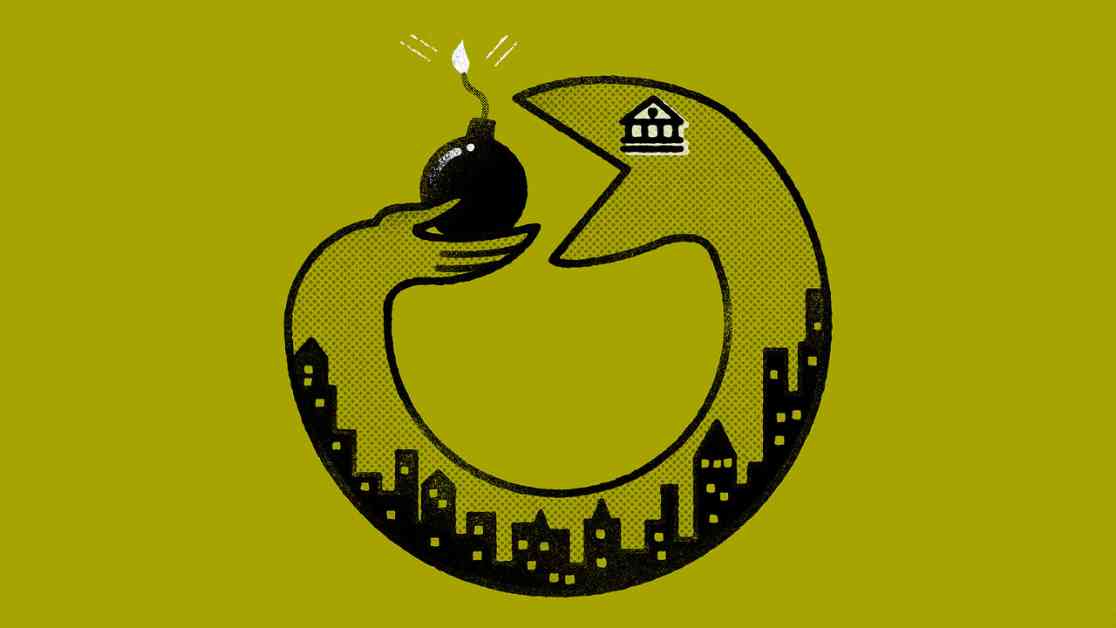The Vulnerability of American Banks to Economic Downturns
In the complex world of finance, the vulnerability of American banks to economic downturns is a pressing concern that cannot be overlooked. While on the surface, banks may appear to be stable and secure institutions, a closer look reveals a different reality. The ouroboros theory of financial risk provides a unique perspective on this issue, shedding light on how credit risk can come full circle and impact banks in ways that are often underestimated.
The Ouroboros Theory: A Historical Perspective
The ouroboros, a symbol of a serpent eating its own tail, has a long history dating back to ancient civilizations. From the tomb of Tutankhamun to Norse mythology, this symbol has been used to represent the cyclical nature of time and the eternal cycle of life and death. In the realm of finance, the ouroboros theory illustrates how credit risk can be passed around and eventually end up back in the hands of banks.
For American banks, this theory holds particular relevance. In times of economic prosperity, banks often engage in risky lending practices in pursuit of higher profits. This can include issuing loans to individuals or businesses with questionable creditworthiness or investing in complex financial instruments with hidden risks. While these actions may yield short-term gains, they also increase the overall level of credit risk in the financial system.
The Impact of Credit Risk on American Banks
As credit risk accumulates in the financial system, the potential for an economic downturn grows. When borrowers default on their loans or financial markets experience turbulence, banks are left vulnerable to significant losses. This can lead to a domino effect where banks are forced to write off bad debts, reduce lending, and even seek government assistance to stay afloat.
The recent financial crisis of 2008 serves as a stark reminder of the consequences of unchecked credit risk. Many American banks were heavily exposed to toxic assets such as subprime mortgages, which resulted in massive losses and the collapse of several major financial institutions. The fallout from this crisis was felt across the global economy, highlighting the interconnectedness of the financial system and the importance of managing credit risk effectively.
Strategies for Mitigating Credit Risk
In light of the vulnerabilities faced by American banks, it is crucial for financial institutions to implement robust risk management practices to protect themselves from economic downturns. This includes conducting thorough credit assessments of borrowers, diversifying their loan portfolios, and stress-testing their balance sheets to assess their resilience to adverse scenarios.
Regulators also play a key role in ensuring the stability of the banking sector. By imposing strict capital requirements, conducting regular audits, and monitoring systemic risks, regulators can help prevent excessive risk-taking by banks and mitigate the impact of potential downturns on the broader economy. Collaboration between banks, regulators, and other stakeholders is essential to maintain a healthy and resilient financial system.
Conclusion
The vulnerability of American banks to economic downturns is a multifaceted issue that requires careful attention and proactive measures to address. By understanding the ouroboros theory of financial risk and its implications for the banking sector, stakeholders can work together to strengthen the resilience of banks and safeguard the stability of the financial system. In an ever-changing economic landscape, proactive risk management and regulatory oversight are essential to ensure the long-term viability of American banks and the prosperity of the economy as a whole.

















